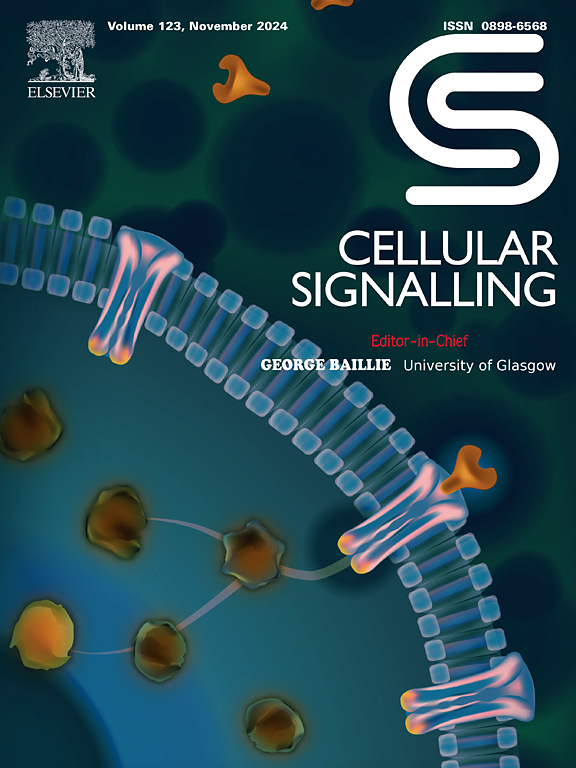Rescuing fertility: Itaconic acid prevents ovarian damage through NRF2-mediated pyroptosis pathways in diminished ovarian reserve models
IF 4.4
2区 生物学
Q2 CELL BIOLOGY
引用次数: 0
Abstract
Background
Diminished ovarian reserve (DOR) is a major cause of infertility, often triggered by inflammation and oxidative stress. Pyroptosis, a form of programmed cell death, has been implicated in DOR pathogenesis. Itaconic acid (IA), an endogenous metabolite, is known for its anti-inflammatory and antioxidant properties. This study aimed to explore whether IA could alleviate lipopolysaccharide (LPS)-induced DOR in mice by inhibiting pyroptosis through the NRF2 pathway.
Methods
A DOR mouse model was established by administering LPS for 5 consecutive days, followed by IA treatment. Ovarian function was assessed by follicle count and hormone levels. Inflammatory markers, oxidative stress, and pyroptosis-related proteins were evaluated in both in vivo and in vitro models. The molecular mechanism was further investigated using inhibitors and molecular docking studies.
Results
IA significantly improved ovarian function in LPS-induced DOR mice by increasing the number of follicles and normalizing hormone levels. IA also reduced inflammation, oxidative stress, and pyroptosis, as evidenced by lower expression of NLRP3, cleaved-caspase-1, and N-GSDMD, while increasing NRF2 expression. In vitro, IA enhanced granulosa cell (GC) viability, reduced reactive oxygen species (ROS), and decreased pyroptosis in LPS-treated GCs. Additionally, the beneficial effects of IA were mediated via the NRF2 pathway, as NRF2 inhibition (ML385) reversed these improvements. Additionally, we identified GSDMD as a downstream target of IA, with inhibition of GSDMD ameliorating DOR progression and inflammatory responses.
Conclusion
IA alleviates LPS-induced DOR by reducing inflammation, oxidative stress, and pyroptosis through activation of the NRF2 signaling and direct inhibition of the GSDMD pathway. These findings suggest that IA may serve as a potential therapeutic agent for improving ovarian reserve and fertility.
挽救生育能力:衣康酸在卵巢储备功能减退模型中通过nrf2介导的焦亡途径预防卵巢损伤
卵巢储备功能减退(DOR)是不孕的主要原因,通常由炎症和氧化应激引起。焦亡是程序性细胞死亡的一种形式,与DOR的发病机制有关。衣康酸(IA)是一种内源性代谢物,具有抗炎和抗氧化特性。本研究旨在探讨IA是否能通过NRF2途径抑制脂多糖(LPS)诱导小鼠的焦亡,从而减轻小鼠的DOR。方法采用LPS连续灌胃5 d,再灌胃IA建立sa DOR小鼠模型。通过卵泡计数和激素水平评估卵巢功能。在体内和体外模型中评估炎症标志物、氧化应激和焦热相关蛋白。通过抑制剂和分子对接研究进一步探讨了其分子机制。结果sia通过增加卵泡数量和使激素水平正常化,显著改善lps诱导的DOR小鼠卵巢功能。通过降低NLRP3、裂解caspase-1和N-GSDMD的表达,同时增加NRF2的表达,IA还可以减轻炎症、氧化应激和焦亡。在体外,IA增强了lps处理的GC的颗粒细胞(GC)活力,降低了活性氧(ROS),并减少了焦亡。此外,IA的有益作用是通过NRF2途径介导的,因为NRF2抑制(ML385)逆转了这些改善。此外,我们发现GSDMD是IA的下游靶点,抑制GSDMD可以改善DOR的进展和炎症反应。结论ia通过激活NRF2信号通路和直接抑制GSDMD通路,减轻lps诱导的DOR的炎症、氧化应激和焦亡。这些发现提示IA可能作为一种潜在的治疗药物来改善卵巢储备和生育能力。
本文章由计算机程序翻译,如有差异,请以英文原文为准。
求助全文
约1分钟内获得全文
求助全文
来源期刊

Cellular signalling
生物-细胞生物学
CiteScore
8.40
自引率
0.00%
发文量
250
审稿时长
27 days
期刊介绍:
Cellular Signalling publishes original research describing fundamental and clinical findings on the mechanisms, actions and structural components of cellular signalling systems in vitro and in vivo.
Cellular Signalling aims at full length research papers defining signalling systems ranging from microorganisms to cells, tissues and higher organisms.
 求助内容:
求助内容: 应助结果提醒方式:
应助结果提醒方式:


